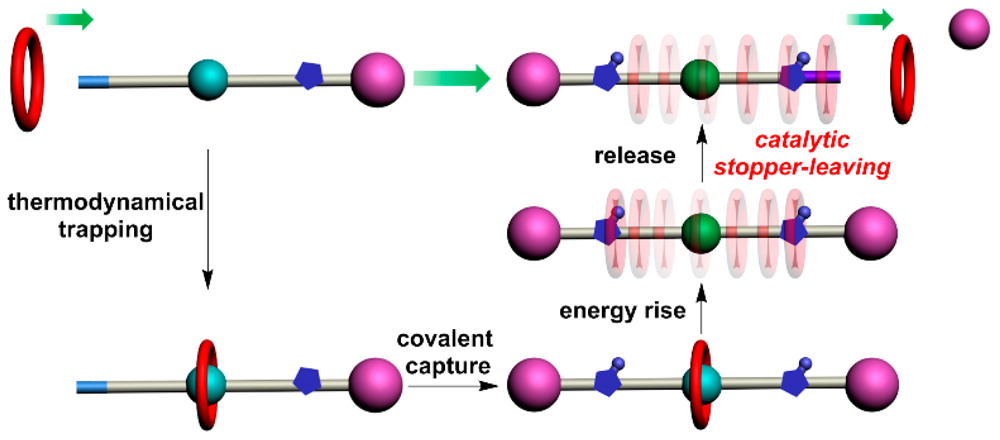Directional Molecular Transportation Based on a Catalytic Stopper-Leaving Rotaxane System
Zheng Meng, Jun-Feng Xiang, and Chuan-Feng Chen*
Ratchet mechanism has proved to be a key principle in designing molecular motors and machines that exploit random thermal fluctuations for directional motion with energy input. To integrate ratchet mechanism into artificial systems, precise molecular design is prerequisite to control the pathway of relative motion between their subcomponents, which is still formidable challenge. Herein, we report a straightforward method to control the transportation barrier of a macrocycle by selectively detaching one of the two stoppers using a novel DBU-catalyzed stopper-leaving reaction in a rotaxane system. The macrocycle was firstly allowed to thread onto a semi-dumbbell axle from the open end and subsequently thermodynamically captured into a nonsymmetrical rotaxane. Then it was driven energetically uphill and got to a kinetically trapped state by destroying its interaction with ammonium site, and was finally quantitatively released from the other end when the corresponding stopper barrier was removed. Although the directional transportation at the present system was achieved by discrete chemical reactions for the sake of higher transportation efficiency, it represents a new molecular transportation model by the strategy of using stopper-leavable rotaxane.

This work has been published in J. Am. Chem. Soc. 2016, 138, 5652-5658.

